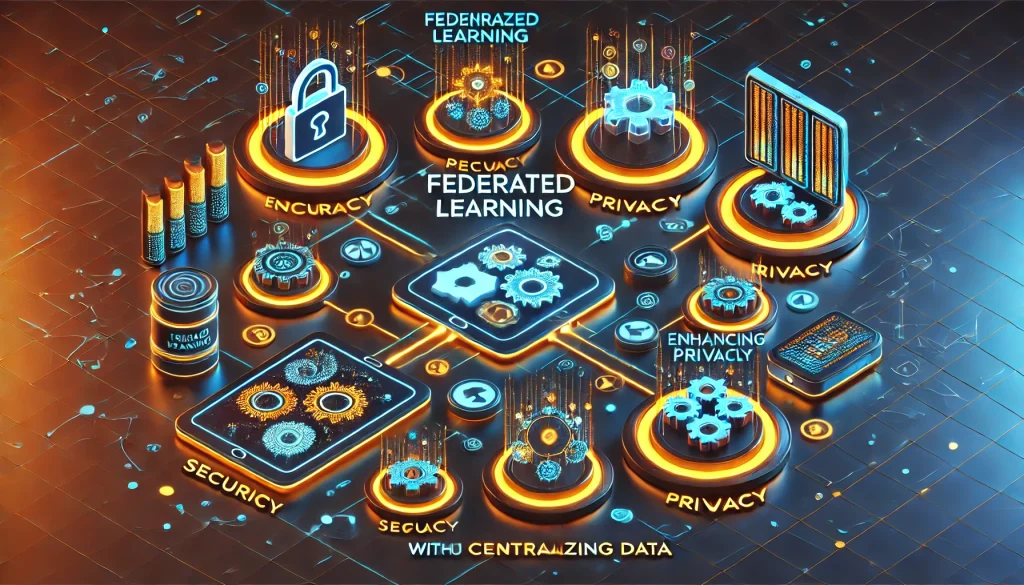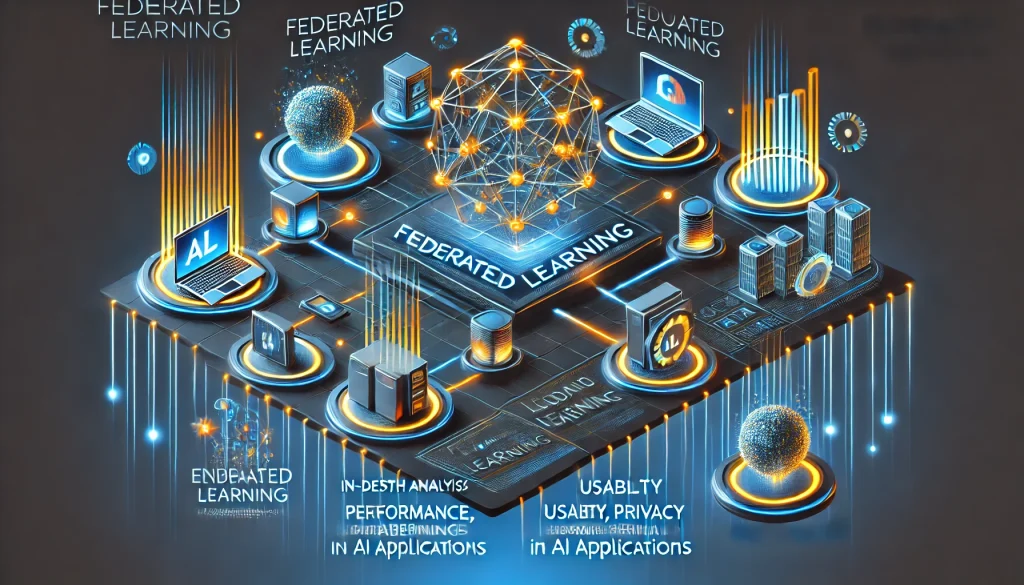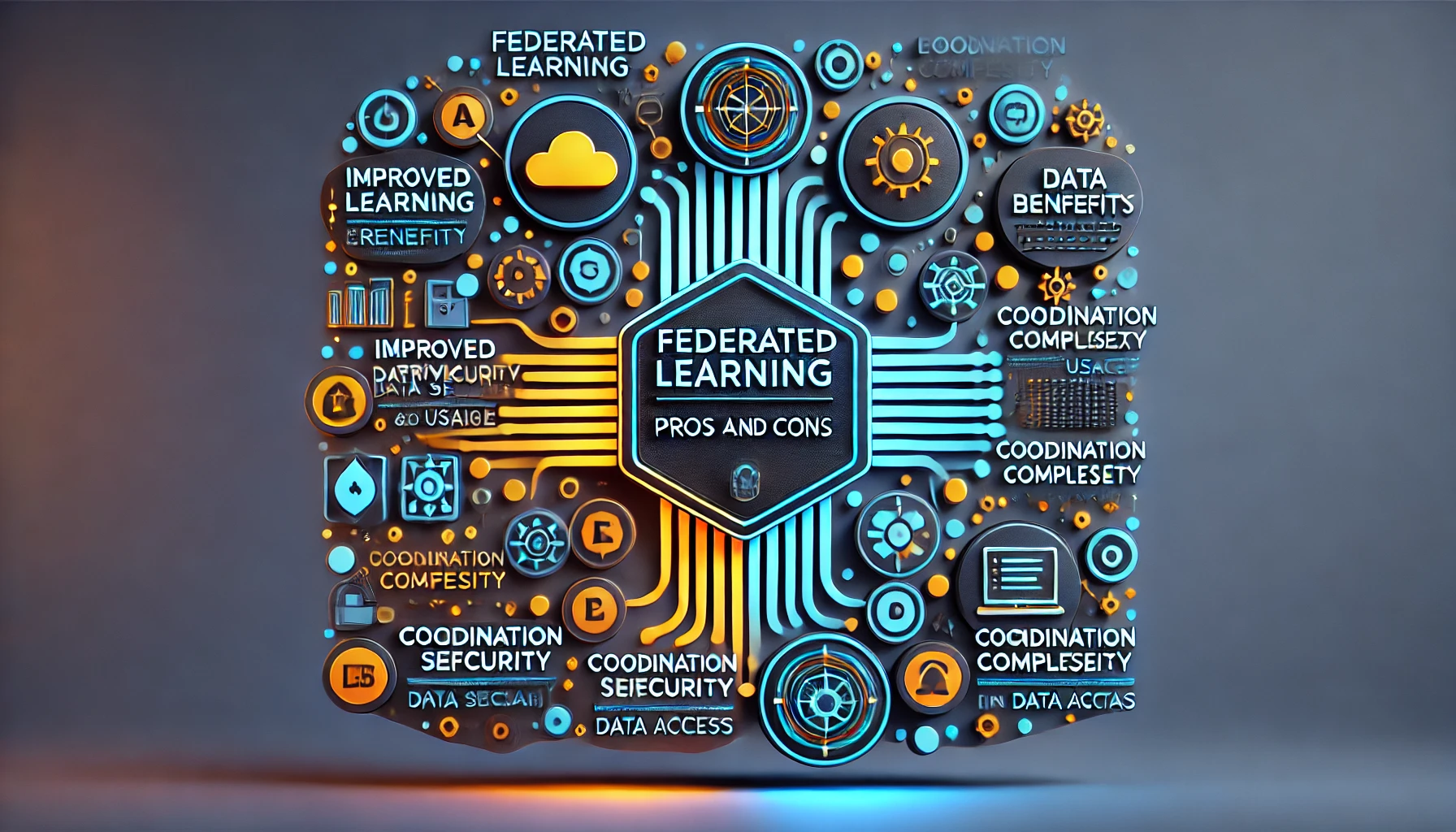Is Federated Learning the Future of AI or Just a Buzzword?

As the world of artificial intelligence (AI) continues to evolve, the rise of Federated Learning brings a new method of machine learning to the forefront. This approach allows data to be processed locally on devices rather than centrally on a server, significantly enhancing privacy and security while still enabling the development of intelligent models. With companies and institutions increasingly interested in federate machine learning, the question remains: is it really the next big thing in AI, or does it have too many drawbacks? In this review, we’ll break down the advantages and limitations of Federated Learning, helping you decide whether it’s worth adopting.
Overview of Federated Learning

Federated Learning is an innovative approach that trains machine learning models directly on decentralized data sources, such as personal devices, without transferring sensitive data to a central server. This is achieved by sending model updates, not the raw data, to a central server, where these updates are aggregated to refine the overall model. It’s a powerful tool in industries where data privacy is paramount, such as healthcare, finance, and IoT.
Some key features of federate machine learning include:
- Data Privacy: Sensitive information remains on local devices.
- Efficient Communication: Only model updates are sent, reducing the need for data transmission.
- Scalability: Can be used across multiple devices, including smartphones, IoT gadgets, and computers.
By maintaining data locality, Federated Learning addresses several of the concerns tied to traditional machine learning, which relies on centralized data gathering, often risking privacy breaches. Its design ensures secure model training while benefiting from diverse and geographically distributed data sources.
Features Overview:
- Decentralization: Data never leaves the device, reducing privacy risks.
- Collaborative Learning: Model improvements happen across many devices or clients.
- Reduced Bandwidth: Minimal data transfer required, ideal for low-connectivity environments.
Federated Learning: Pros and Cons
Before deciding whether Federated Learning is suitable for your use case, it’s important to weigh the positives against the drawbacks. Here, we explore both aspects to give a balanced perspective.
| Pros | Description |
|---|---|
| Enhanced Privacy | Since raw data remains on individual devices, it reduces the risk of privacy breaches. |
| Reduced Data Traffic | Only model updates are sent, significantly lowering bandwidth needs. |
| Collaborative Learning | Leverages distributed data from multiple sources for more robust model training. |
| Regulatory Compliance | Federated learning aligns with GDPR and HIPAA regulations, simplifying compliance for organizations. |
| Cons | Description |
|---|---|
| Increased Complexity | Implementing federated learning requires more sophisticated infrastructure. |
| Resource-Intensive | Local devices must have sufficient computational power, which might not always be available. |
| Potential Model Bias | Data distribution among devices could lead to biases in model performance. |
| Security Risks | While privacy is improved, federated systems can still be vulnerable to targeted attacks. |
A Deep Dive Into Federated Learning: Performance, Usability, and More

Decentralization and Security
In contrast to traditional machine learning, federated machine learning operates on a decentralized system, where data stays on the source device. This approach ensures that data owners retain control of their information. Given the increasing attention to privacy issues, such as those addressed by GDPR, this feature positions federated learning as a solution to modern data challenges. However, decentralization introduces a few wrinkles, such as the need for devices to have adequate computational power and security.
Efficiency and Usability
Another major benefit is reduced bandwidth usage. Only the model updates are shared with the central server rather than the raw data itself. This makes federated learning an attractive solution for environments with low internet connectivity or bandwidth limitations, such as rural areas or edge computing scenarios. That said, the devices that participate in the learning process need to have sufficient hardware resources. For example, older mobile phones might struggle with the computational load, which could limit the system’s reach.
Model Accuracy and Bias Concerns
One of the challenges in federate machine learning is ensuring that the model remains accurate and unbiased. Since the data is distributed across multiple devices, there’s the potential for uneven data distribution, leading to biases in the training model. For instance, a model trained largely on data from urban areas might underperform in rural settings due to the lack of representative data.
Federated Learning vs. Traditional AI Models: Which One Wins?
When considering Federated Learning alongside traditional machine learning models, the key differentiator is how the data is handled. In centralized AI models, data from all users is pooled into a central server where the machine learning model is trained. This process is prone to privacy risks and incurs significant costs in terms of data storage and processing.
The federated machine learning approach, by contrast, keeps data localized, which offers distinct advantages in privacy, but comes with trade-offs like increased infrastructure complexity and potential model inaccuracies. Let’s break down the key comparisons between the two methods.
| Criteria | Federated Learning | Traditional AI Models |
|---|---|---|
| Data Privacy | Keeps data local, enhancing privacy. | Pooled data on central servers increases risk. |
| Bandwidth Usage | Only model updates are transferred, reducing data traffic. | Large datasets must be transferred to a central server. |
| Infrastructure | More complex and resource-intensive, requiring powerful local devices. | Centralized, with simpler infrastructure but higher data storage costs. |
| Model Accuracy | May vary based on uneven data distribution across devices. | More consistent due to centralized, pooled data. |
Final Thoughts on Federated Learning
In conclusion, Federated Learning represents a significant leap forward in the world of artificial intelligence by addressing critical concerns surrounding data privacy and bandwidth efficiency. While it excels in safeguarding sensitive information and reducing data transfer, it is not without its challenges. Increased complexity, the need for resourceful devices, and the risk of bias in model training can be obstacles for organizations. However, for industries where privacy is non-negotiable, like healthcare or finance, federate machine learning could offer a game-changing solution. As the technology evolves, its potential applications will likely expand, making it a key player in the future of AI.
Federated Learning Rating
★★★★☆ (4/5)
FAQ
What is Federated Learning?
Federated Learning is a machine learning approach that allows models to be trained across multiple decentralized devices, ensuring that sensitive data remains on the source device while only model updates are shared.
How does Federated Learning enhance privacy?
Since federate machine learning keeps data on local devices and only transfers model updates, it minimizes the risk of data exposure and ensures that sensitive information remains private.
Is Federated Learning better than traditional machine learning?
It depends on the use case. Federate machine learning offers enhanced privacy and bandwidth efficiency, but traditional AI models might provide more consistent accuracy due to centralized data processing.
Resources
- IBM Research. What is federated learning?
- PixelPlex. Federated learning guide
- OctaiPipe. Benefits of federated learning explained
- CMU ML Blog. Federated learning: Challenges, methods, and future directions
- Digica. Federated learning part 2

